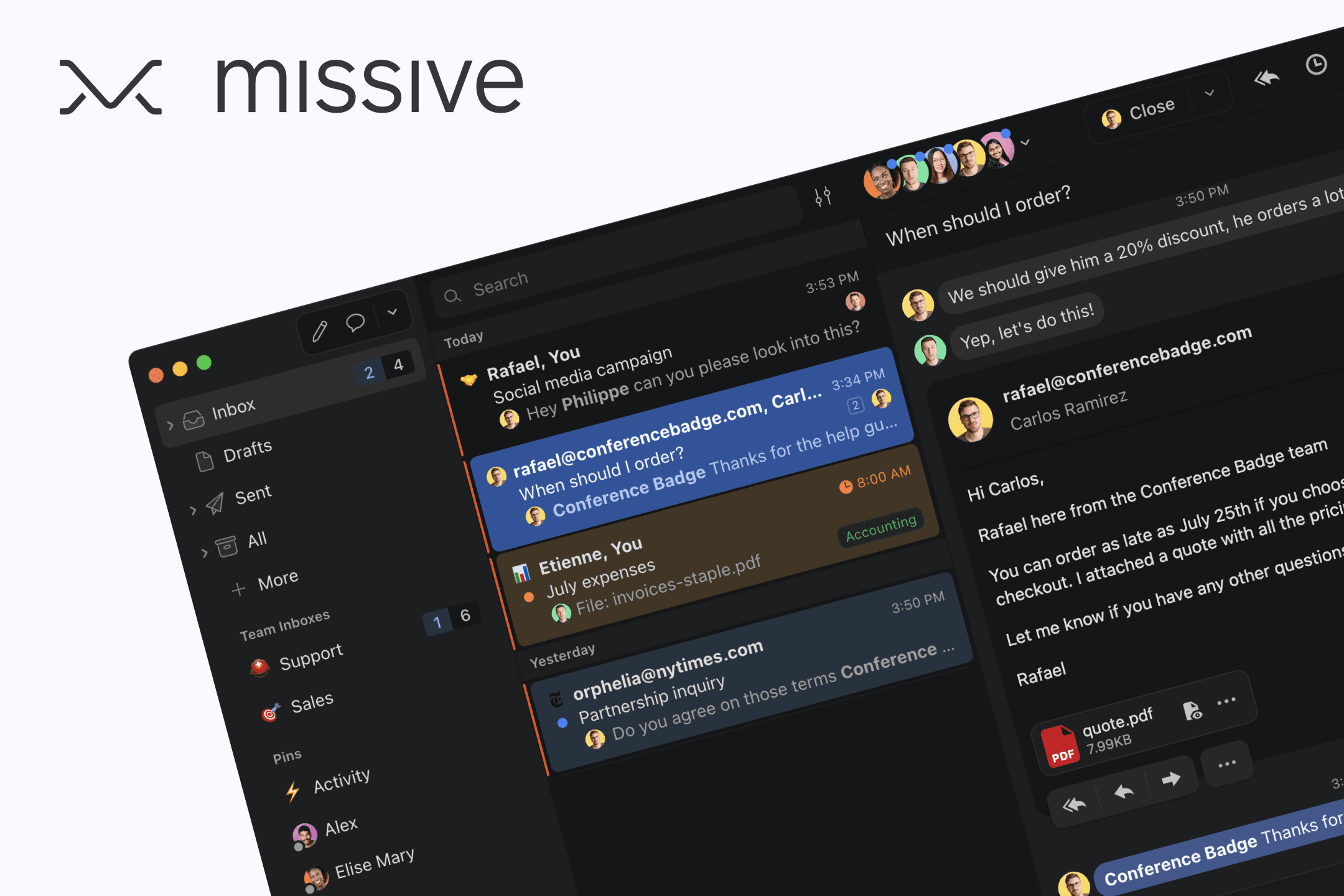Turning ideas into actions with Missive's unified realtime communication tools

Discover how Pusher powers realtime in Missive's unified communication platform. Missive's tooling enhances teamwork, streamlines collaboration, and bridges the gap between remote team members.
Introduction
In today’s fast paced business landscape, cross-communication between team members is paramount for success.
Since the pandemic, there has been a steep increase in remote work and distributed teams. Many companies have continued to maintain a remote working setup or converted into a hybrid working model. While those changes allow team members to enjoy more flexibility and have contributed to a dramatic improvement in work life balance for many, asynchronous working environments undoubtedly bring their own set of challenges. Collaborative and streamlined communication platforms are now even more crucial to ensure effective communication and business continuity.
Missive, a communication platform designed for teams, addresses the challenges of modern organizations and helps teams to interact and collaborate more effectively to achieve their goals. Realtime infrastructure by Pusher Channels maximizes live communication features which facilitate teams realtime interactions.
The challenge of fragmented communication
Missive combines essential communication channels such as email, chat and task management into a single interface – reducing the chances of miscommunication and the need for teams to juggle between multiple tools.
Unified communication platforms have skyrocketed in the business operations market in recent years, aiming to solve a common frustration many of us have experienced since the rise of remote working: fragmented communication.
Emails, while still being the preferred communication channel for professional communication, sometimes result in cluttered inboxed and delayed responses. While live chat can lead to disjointed discussions with loss of context and challenges in managing actional tasks arising from them.
Fragmented communication hinders teams from achieving their objectives effectively. That’s where solutions like Missive come to play.
From messaging to actionable tasks: a unified approach
Missive tackles team communication challenges by offering a platform that integrates chat, email and task management altogether — allowing teams to manage communication flows in one single place. The synchronization between tools also helps to convert ideas emerging from discussions into actionable next steps without the need to switch between services.
The feature-rich platform includes team inboxes, multiple third-party integrations, task labelling, conversation assignment and analytics among others.
Missive also recognizes that certain conversations require immediate attention and realtime collaboration. To deal with that, the platform supports peer-to-peer realtime communication capabilities and live features like online status in their chat app.
This facilitates spontaneous conversations – initiating group or one-on-one instant interactions, while important discussions are captured and are not impeded by communications bottlenecks.
Realtime powered communication
Using peer-to-peer message broadcasting through a Rails application and Pusher Channels for WebSocket infrastructure, Phillipe Lehoux, CEO at Missive, shared the important role Pusher has played for many years as a backbone of everything realtime.
“At first, the decision for us was between building and maintaining our own infrastructure or using Pusher WebSockets. As a small team, we decided to use Pusher as it is more cost effective, but also thanks to its flexibility for all our realtime needs.”
Missive team of four’s decision to use Pusher Channels was driven by favoring efficiency rather than allocation resources to develop their own infrastructure. This freed up time for them to focus on what matters most: building a comprehensive communication platform.
Phillipe also added that Pusher was now a major part of their product's skeleton.
“We’ve made the right decision from the start because since we built the Pusher implementation, we never had to touch or maintain it again as it just works seamlessly.”
Today, Missive is used by more than 3000 businesses, handling billions of emails.
Like Missive, engineering teams of different sizes can choose to ditch building things from scratch and take the shortcut of using hosted APIs to take care of their infrastructure. This saves time and money, but also empower developers to focus on building core products and features that matter.
Ready to start building with Pusher? Try Pusher for free or reach out to us.